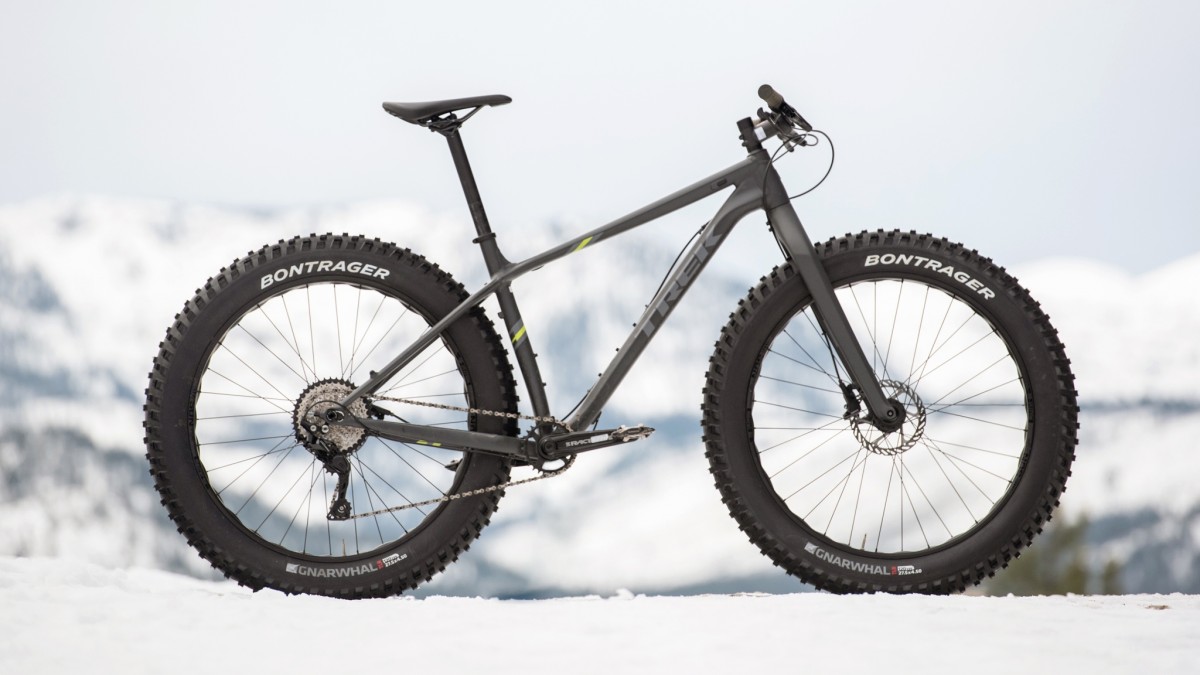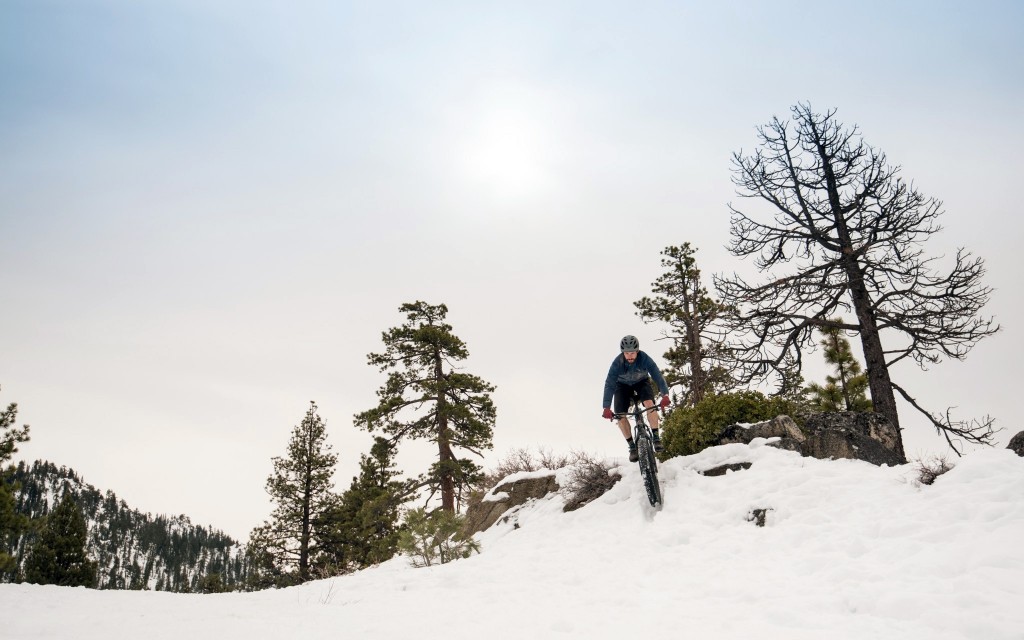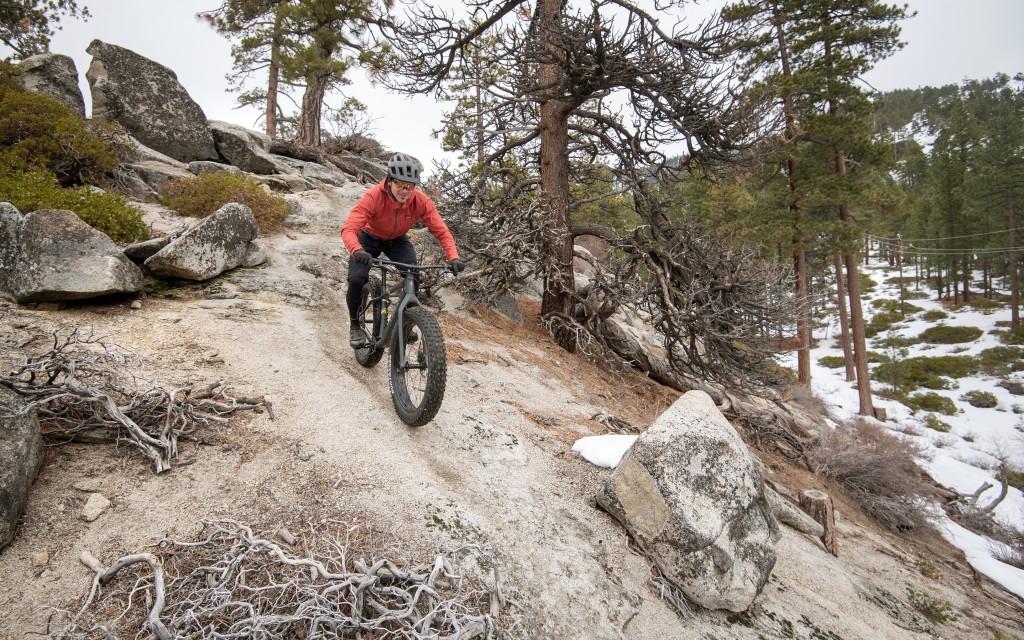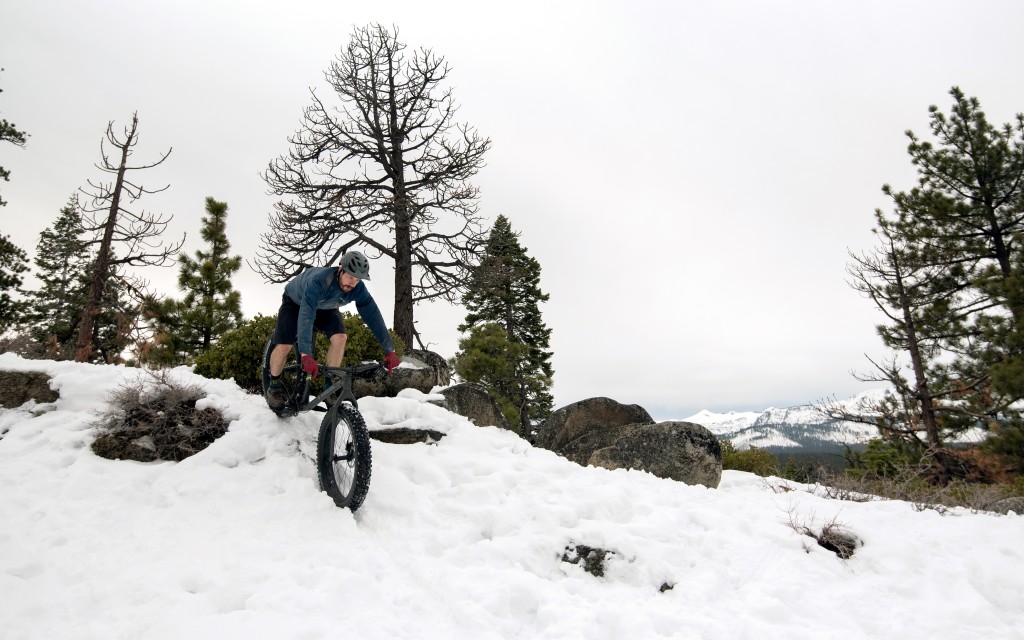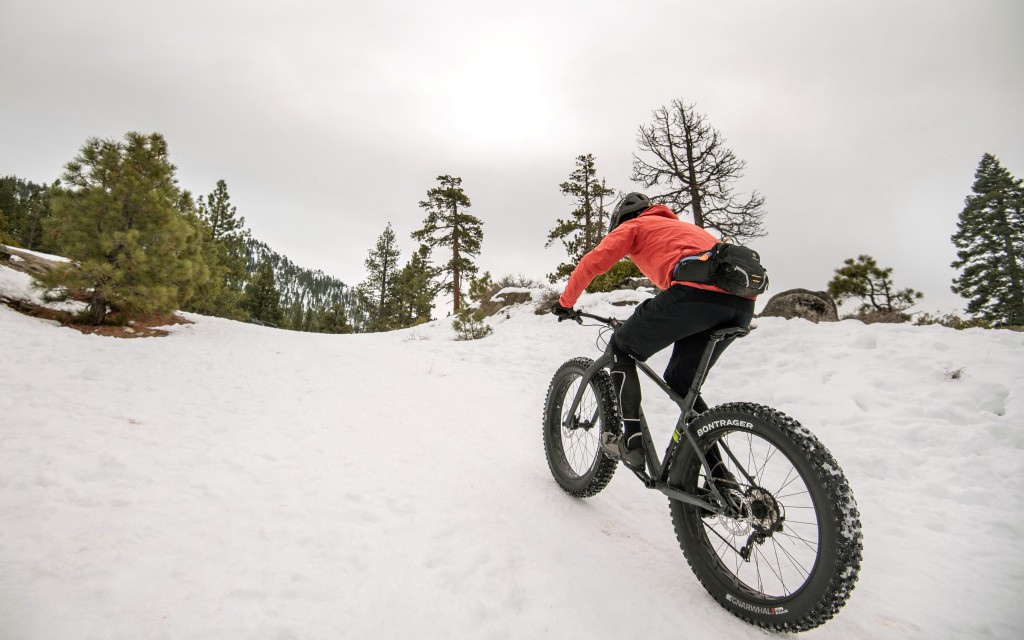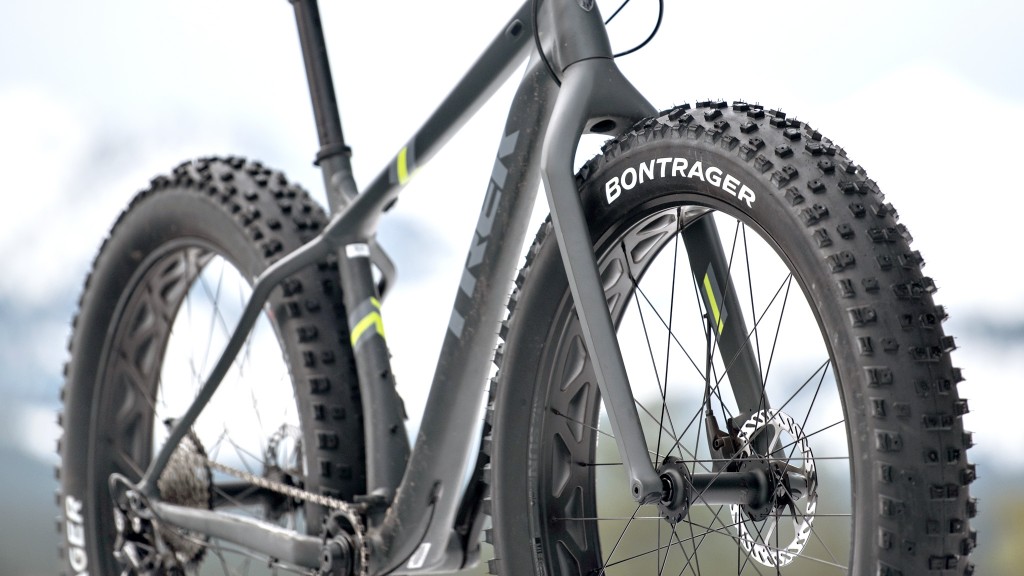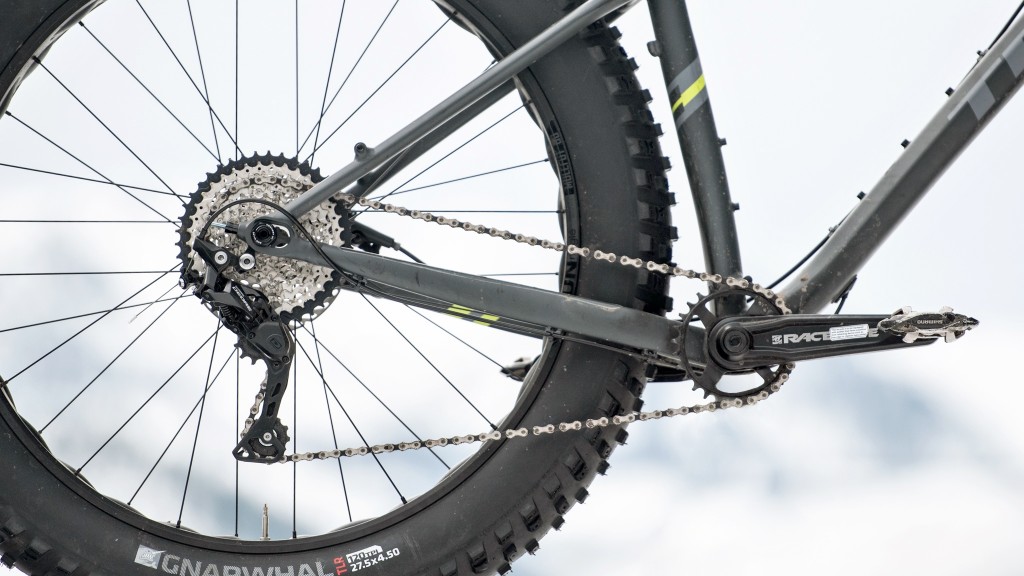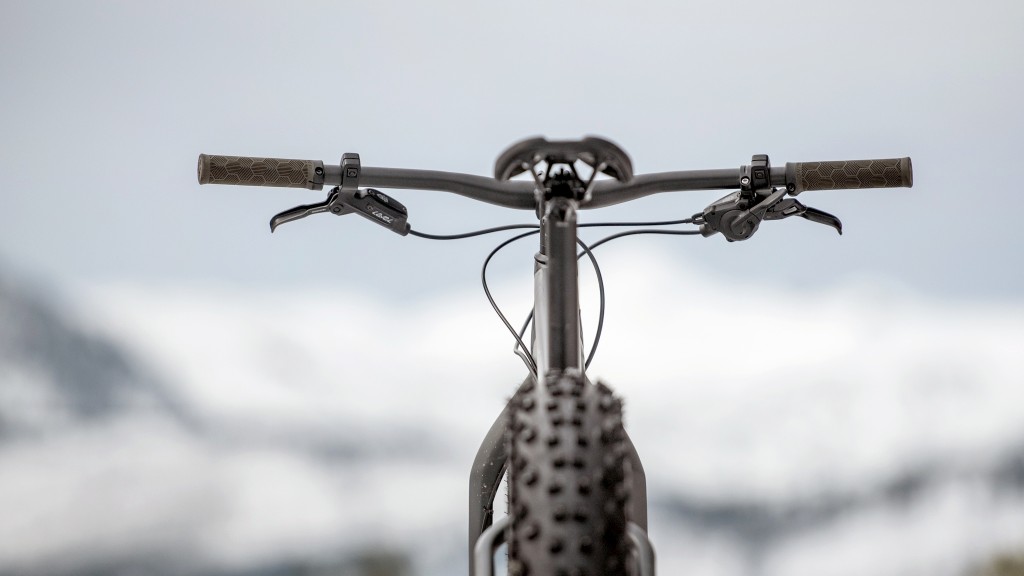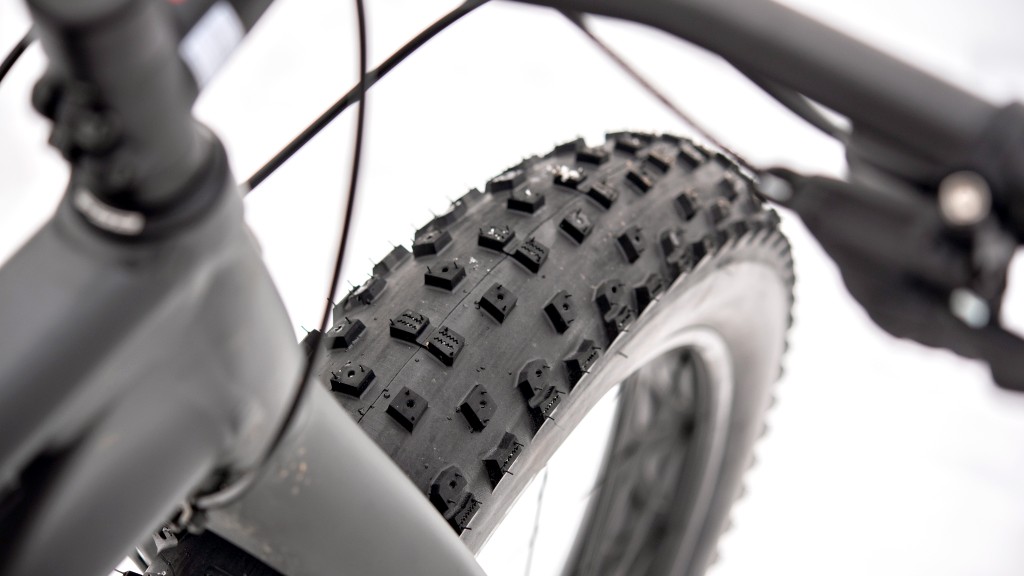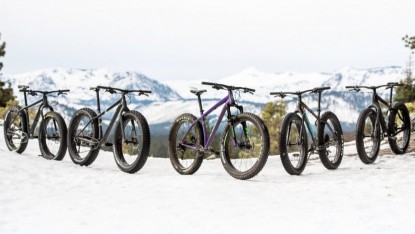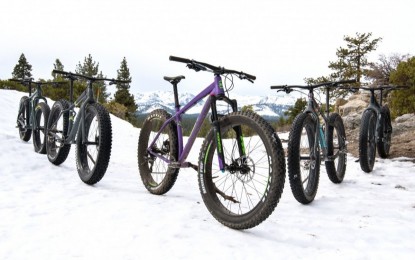Our Verdict
Our Analysis and Test Results
The Farley 5 has been updated to have a slightly slacker headtube, a dropper post, and a new microSHIFT drivetrain. The updated frame also has additional bag mounting points for those looking to bikepack in the snow.
Trek Bikes is headquartered in Waterloo, Wisconsin, and their location in the upper mid-west means they probably know a thing or two about riding in cold and often snowy environments. They make a small line of fat bikes, and the Farley 5 is their entry-level model that is offered at a very reasonable entry-level price. Aside from the asking price, the Farley 5 is relatively comparable in weight, geometry, and performance to the other fully rigid fat bike models in this review.
Performance Comparison
Downhill Performance
On the descents, the Farley 5 performs a lot like you might expect for a fully rigid bike. It is most at home on smooth snow or dirt trails where its lack of suspension feels efficient and is more of a benefit than a hindrance. Despite the bike's lack of suspension, the massive air volume of the 27.5" x 4.5" Bontrager Gnarwhal tires helps to absorb a significant amount of shock and smooths over small obstacles and trail chatter, especially when you run the tires at low pressure, we liked them around ten psi. The bike's short wheelbase and relatively short reach help to make it plenty maneuverable, while the large contact patch and grippy tread of the tires offer seemingly endless grip when cornering. While this bike isn't as long as some of its competitors, it still feels comfortable and planted at speed, mostly due to the girthy rubber. Testers rode this bike on both snow and dirt and were very impressed by its surprising lack of rolling resistance and solid cornering abilities.
When the going gets rough is when you begin to notice the shortcomings of the Farley 5, and all of the other fully rigid models for that matter, on the descents. You can feel the feedback from larger rocks, roots, or chunky snow come straight up through the rigid fork, into the handlebar, and ultimately, your hands. It's no worse than any of the other models with rigid forks, but it's a far cry from the supple front end of the Farley 7. The 69-degree head tube angle is on the steeper side of the bikes in this test, but it feels fine on the terrain that this bike is intended for. The cockpit is relatively well equipped, although our testers generally prefer a shorter and stiffer stem and a handlebar a little wider than 750mm. That said, it worked well and provided precise enough handling. Testers would have enjoyed a quick-release seat post clamp on this bike to prevent them from pulling out the multi-tool every time they wanted to lower the saddle for an extended section of downhill riding.
Uphill Performance
Much like the downhill performance of the Farley, its uphill performance is strikingly similar to the other rigid models in this review. It weighs 31 lbs and 11 oz and isn't especially heavy, although the differences in weight between the five models in this test aren't all that dramatic, and we feel it's very respectable for an alloy-framed bike with 4.5" tires. While climbing or seated pedaling on flat terrain it feels very efficient, and the only wasted energy is that lost through the super wide and soft tires, although those tires do provide excellent traction. Testers were pleasantly surprised that there wasn't more rolling resistance while riding the Gnarwhal tires on dirt or snow, but they do feel incredibly sluggish and awkward on pavement.
The rider's position while climbing is quite comfortable, with a moderate 446mm reach and a slightly taller front end than some of the competition. The 74.4-degree seat tube angle puts the rider right up on top of the bottom bracket and keeps the weight distributed relatively well for climbing traction. The shorter length wheelbase and 69-degree head angle also give this bike a pretty short turning radius, which helps with tight uphill switchbacks or in case you encounter some tighter more technical climbing. When the climbs get a little steeper, the Shimano Deore 10-speed drivetrain did leave us wanting for another lower gear, but generally speaking, it was fine whenever riding on dirt, and you can't really climb snow that's very steep anyway. All in all, the Farley climbs pretty darn well.
Versatility
The Farley 5 in its factory build is best suited to snow or very soft surface riding. The massive 4.5" wide Gnarwhal tires are super girthy and provide tons of floatation for use on soft surfaces like snow or sand. Those huge tires also have a meaty tread pattern and grip as well or better than the Maxxis Minion tires found on many of our other test models. Despite this bike's huge tires, it proved not to be a one-trick pony, and we were surprised by its mixed-condition performance and capabilities on dirt and normal trail conditions as well. With limited accessory mounts on the frame and fork, the Farley 5 isn't as well equipped for bike packing or adventure riding as some other models.
Build
The Farley 5 is the least expensive model in this review, yet it has a component specification that is pretty comparable to its more expensive competition. The bike's skeleton is Trek's Alpha Platinum aluminum frame with a Bontrager Haru rigid fork with carbon lowers that has been 100mm suspension corrected. This suspension correction may seem insignificant, but it does help to raise the front end of this bike a little bit, and the geometry won't change significantly if you were to purchase an aftermarket suspension fork. The frame has two water bottle mounts in the front triangle and has mounting options for a rack or other accessories on the seat stays of the rear triangle. The frame is also designed to accommodate an internally routed dropper seat post.
Trek's choice of a 10-speed Shimano Deore drivetrain is a little bit of a letdown as we prefer 11 and 12-speed drivetrains these days, but it works well and offers a pretty good range. This drivetrain setup includes a Shimano Deore derailleur and shifter, 11-42 tooth cassette, and Race Face Ride cranks with a 28-tooth chainring. Similar to the competition, Trek equipped the Farley 5 with SRAM Level hydraulic disc brakes and 160mm rotors front and rear. The basic Level brakes don't have much bling factor, but testers found them to work well for the lower speeds associated with riding on the Farley 5.
In typical Trek bike fashion, the Farley 5 is clad in quite a few Bontrager, Trek's house brand, parts. This includes virtually all of the cockpit components like the 750mm wide alloy handlebar, 80mm stem, and the XR Trail Comp lock-on grips. Our testers tend to prefer shorter stems and slightly wider handlebars, but 750mm isn't too far off the mark and will be wide enough for most riders. Trek also mounted a Bontrager Arvada saddle atop a basic alloy seat post that is held in place by a non-quick-release seat post clamp. The saddle works just fine but isn't quite as comfortable as the WTB saddles found on some of the other models. We also prefer quick-release seatpost clamps on bikes with rigid seat posts to speed up changes in saddle height.
As with most fat bikes, the Farley 5 has SUNringle Mulefut rims. In this case, they are 80mm wide in a 27.5" size and are laced to a set of Bontrager hubs with 12 x 197mm rear and 15 x 150mm front axle spacing. We've read complaints online about the durability of these hubs, but ours worked well throughout our testing. The Farley is mounted up with massive 4.5" Bontrager Gnarwhal tires. These tires provide excellent floatation and impressive traction on both snow and dirt. Due to the girth of these tires, testers expected the Farley to roll slower and generally feel more sluggish side to side, but that was not the case. The 15.5" and 17.5" frame sizes of this bike come with a 4.5" Bontrager Barbegazi rear tire.
Geometry
The Farley 5 shares relatively similar geometry numbers with the other fully rigid bikes in this review. When compared to modern geometry numbers for trail mountain bikes, they seem relatively conservative, but they are pretty standard for fat bikes. The head tube angle of 69 degrees certainly sounds a little steep, but it works well for this style of bike. The fork on the Farley has been 100mm suspension-corrected, which helps make the front end of this bike a little taller and more comfortable than some. The seat tube angle of 74.4 degrees feels good and works well while spinning away on flat terrain and gradual climbs. The shorter reach measurement of 446mm feels good on this bike and helps keep you in a comfortable seated pedaling position. The wheelbase is also on the shorter side at 1143mm. The chainstay length of 446mm is moderate in length but very reasonable considering the clearance needed for the 27.5" x 4.5" rubber on this bike. The rear dropout is adjustable and allows for 15mm of adjustment to accommodate different-sized tires or in case you want to set this bike up as a single speed. We also measured the Q-factor, the distance between the cranks, on the Farley at 180mm, which is certainly on the wider side, but we feel is quite respectable considering the rear tire clearance this bike has.
Should You Buy The Trek Farley 5?
If you're looking for a less expensive fat bike to add to your quiver or a relatively affordable entry-level model, we think the Farley 5 is worthy of consideration. Despite its low price, it offers performance that is better than or equal to several of the more expensive bikes in this review. It's lightweight for the price, has a comfortable geometry, climbs and pedals efficiently, and it looks pretty good too. There's nothing mind-blowing about its performance, but it gets the job done and costs less than most of the competition.
What Other Fat Bikes Should You Consider?
If it's value you seek, but you're more interested in a carbon frame, the Canyon Dude CF 7 is an obvious choice. It costs just a bit more but gets you a sleek carbon frame that weighs 1.5 pounds less overall. If you're planning to tackle rougher terrain and conditions, the Trek Farley 7 shares the same frame and geometry, but comes with a suspension fork, dropper seatpost, and other component upgrades. It costs a bit more but provides a much more comfortable and composed ride.


